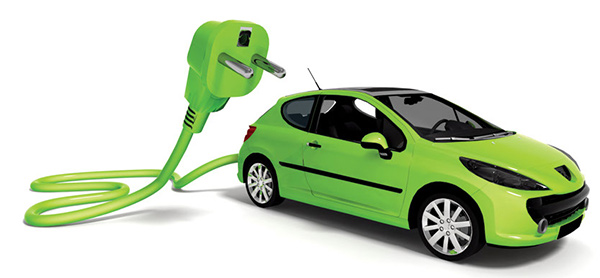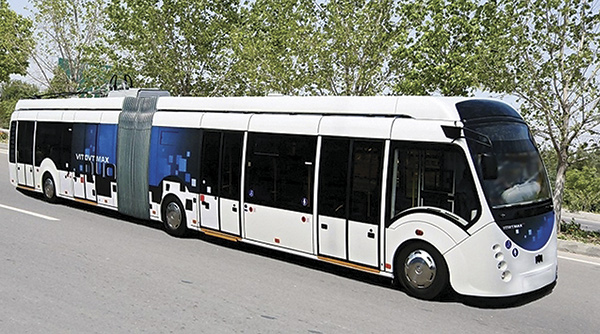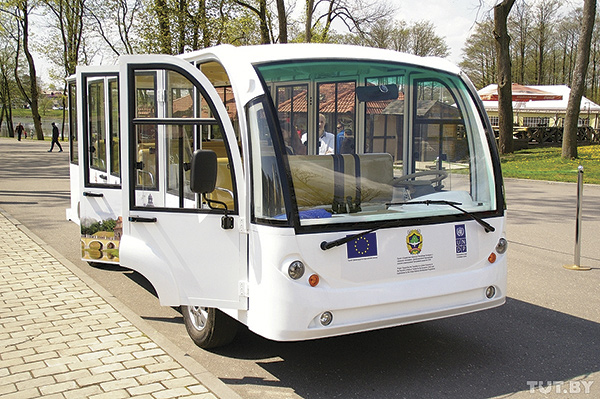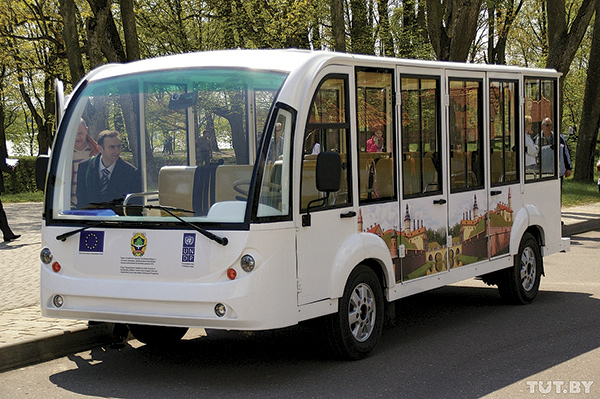
Actually, in recent years, the number of harmful emissions from this source of pollution is falling. According to Sergey Novoselov, who heads the Labour Safety and Ecology Department of the Belarusian Research Institute of Transport Transtekhnika (BelNIIT), between 2010 and 2014, emissions fell by 6.5 percent (by 881,000 tonnes), despite the number of vehicles having risen. This has become possible, since engines are now more eco-friendly, comments Mr. Novoselov, with domestic enterprises manufacturing buses operating to at least EURO-4 standards. “The same refers to fuel. Domestic producers now produce competitive goods which enjoy popularity abroad. It’s very important that they emit less sulphur and are easily finding a market abroad too,” he said.
Nevertheless, there is some way to go before alternative fuels (such as natural gas and electricity) dominate. This year, the Minsk bus fleet has received ten gas-fuelled buses, with emissions (according to experts) half that of petrol vehicles. Which figures do they refer to? For every thousand litres of liquid oil motor fuel, between 180kg and 300kg of carbonic oxide is released, alongside 20kg-40kg of hydrocarbons, and 25kg-45kg of nitrogen oxide.
Nevertheless, it may be still some time before we notice a difference in air quality of cities.
Electro-buses are still at pre-production stage, with some privately owned models operational, alongside several arriving into the country via an international technical assistance project — ‘Supporting the Transition to a Green Economy in the Republic of Belarus’. Meanwhile, Belkommunmash’s two Е433 buses will appear in Minsk in late 2016, with eighteen more by 2018.

Electro-transport is being hailed as the wave of the future, with Lithuania having received 30 million Euros from the EU to develop its electric fleet. Estonia, which has already completed such kind of programme, now has a thousand electric cars and a hundred charging stations.
Of course, once Belarus’ nuclear power station launches, there will be little difficulty in finding electrical capacity for recharging stations. According to Olga Prudnikova, who heads the Production and Technical Board at Belenergo State Production Association, an extensive network of stations is planned, for use by private and public transport.
Some may be sceptical, but think how we once felt on the introduction of mobile phones. Within five years, we may feel the same about electric transport. China, the EU, and the USA are already investing in this sphere, promoting sales via preferential purchase terms, for example, free parking and free recharging. Such vehicles are also given their own lane, and are exempt from ecological tax. These all sound very attractive. What can be offered in our country? So far, the only move Belarus has made to make electro-transport attractive is the possibility of duty-free import.
There is also huge scope to develop urban cycling in our country, with 1.5 million people reporting using a cycle. The number has grown since even five years ago but, as Mr. Novoselov admits, cycling is considered to be a pastime for teenagers, rather than a viable method of transport for working adults.
 |  |
A way-out of the situation may be the limiting of the number of cars with access to central city locations, as in London for instance (where a congestion charge deters unnecessary road usage).
The so-called ‘modal shift’ involves transferring passenger traffic from personal to public transport, via motorists leaving their cars at designated parking sites. Moscow is already seeing success with this approach.
Are we ready to rely more on buses and trams? It’s still a big question. However, Mr. Novoselov says, “Buses use five times less energy per passenger than a personal car; trams and the metro use ten times less. Development of public and green transport (via bicycle infrastructure) will solve problems of cleanliness of air and traffic jams.” He argues that we don’t need new highways, we need alternative solutions.
By Vera Artemieva












